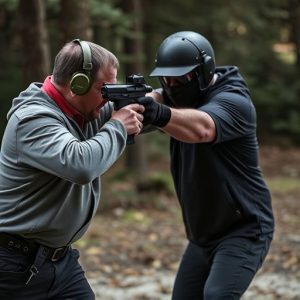Safe Stun Guns: Protecting College Students from Accidental Discharge
Self-defense stun guns are increasingly popular among college students, offering a sense of security…….
Self-defense stun guns are increasingly popular among college students, offering a sense of security in vibrant but potentially unsafe campus environments. However, accidental discharges often result from lack of training, careless handling, and misunderstanding of the device's triggers, posing risks to users and bystanders. To mitigate these dangers, emphasis must be placed on: 1) safe stun gun design with reliable activation mechanisms and user-friendly controls; 2) comprehensive training programs that include practical scenarios and psychological preparation for high-stress situations; 3) education about local laws regarding stun gun ownership; 4) stringent campus safety protocols including secure storage, access controls, and regular refresher courses. These measures are crucial for ensuring responsible self-defense while upholding public safety on college campuses.
Accidental discharge of weapons, especially self-defense stun guns, poses significant risks on college campuses. This article explores critical prevention mechanisms designed to safeguard users and bystanders alike. We delve into the root causes and potential dangers of accidental discharges, focusing specifically on their relevance to self-defense stun guns carried by college students. Key topics include advanced design features, comprehensive training, legal frameworks, and campus safety protocols essential for mitigating risks associated with these devices.
- Understanding Accidental Discharge: Causes and Risks
- Self-Defense Stun Guns: A Tool for College Students
- Design Features of Safe Stun Gun Mechanisms
- Training and Education: The Human Factor in Prevention
- Legal Considerations and Campus Safety Protocols
Understanding Accidental Discharge: Causes and Risks
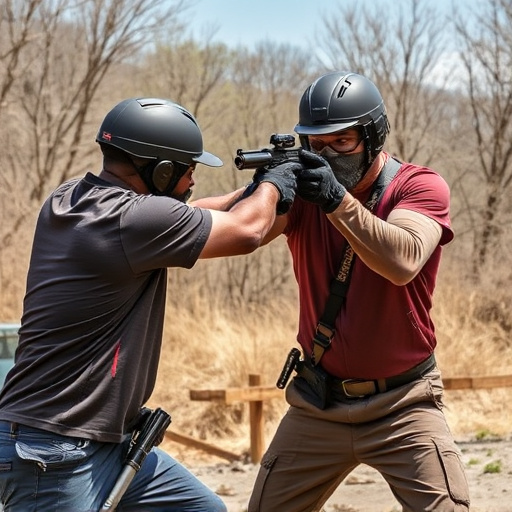
Accidental discharge, a potentially dangerous event, often arises from mishandling or misunderstanding of firearms, specifically self-defense stun guns. In the context of college students carrying self-defense stun guns for personal safety, understanding the causes and mitigating risks is paramount. One primary cause is lack of proper training; many students may not be adequately educated on the gun’s functionality, safety protocols, or how to respond in stressful situations, leading to accidental activation.
Another significant risk factor is carelessness or negligence. Students might leave their stun guns unattended, accessible to peers or even younger siblings, increasing the chance of unintentional discharge. Moreover, using a stun gun for display or as a symbol of bravado could inadvertently trigger an alarm response in individuals with anxiety disorders or other mental health conditions, potentially causing panic and accidental activation.
Self-Defense Stun Guns: A Tool for College Students
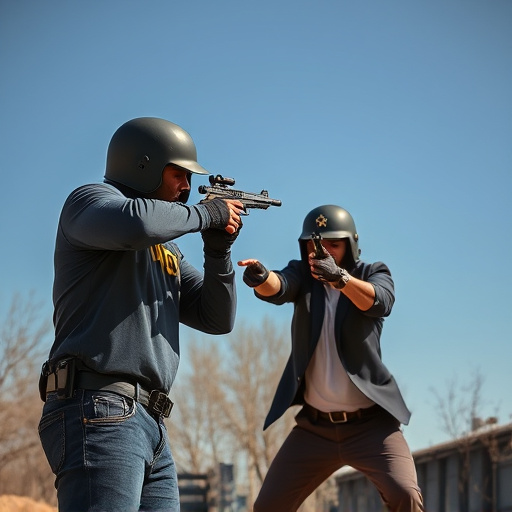
College campuses, with their bustling atmospheres and diverse communities, can unfortunately be places where personal safety is a concern. For students seeking to protect themselves, self-defense stun guns have emerged as a powerful tool. These compact devices offer a non-lethal means of deterring potential attackers, providing peace of mind for those navigating the challenges of higher education.
Designed specifically with college students in mind, self-defense stun guns are easy to carry and use, making them accessible personal safety measures. Their high voltage shocks can temporarily incapacitate an assailant, allowing the user to escape and seek help. This technology empowers individuals to take control of their security while they focus on their studies and personal growth in a dynamic academic environment.
Design Features of Safe Stun Gun Mechanisms
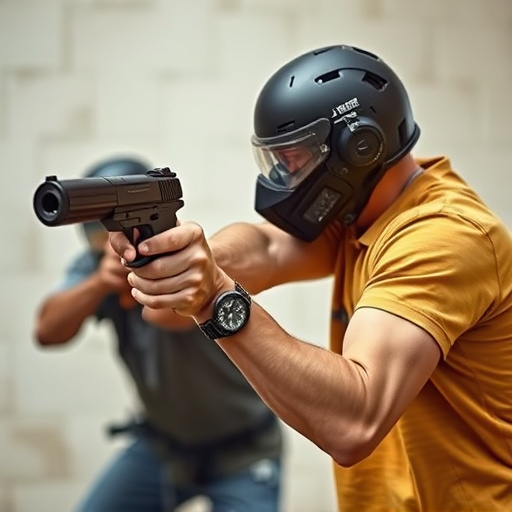
The design features of safe stun gun mechanisms play a pivotal role in ensuring their responsible use, especially among college students opting for self-defense options. One crucial aspect is the incorporation of reliable activation switches that require a conscious and deliberate action to deploy the device. This prevents accidental activations, which could lead to unintended consequences on campus or in crowded areas. Additionally, these mechanisms often include features such as safety locks and secure carrying cases, promoting safe storage and transportation.
Furthermore, the design should consider user-friendly controls, ensuring that individuals, particularly those with limited experience, can operate the stun gun effectively without causing harm to themselves or others. This includes well-marked buttons and clear instructions, fostering confidence in users while emphasizing responsible usage. Such features contribute to making self-defense stun guns viable tools for college students seeking personal safety without compromising safety standards.
Training and Education: The Human Factor in Prevention
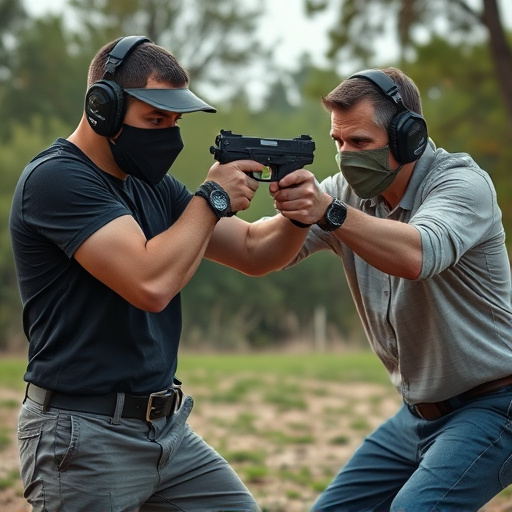
In the context of accidental discharge prevention, training and education play a pivotal role, especially when it comes to self-defense stun guns for college students. Beyond understanding the technical aspects and features of their devices, individuals must be equipped with comprehensive knowledge about safe handling practices. This includes learning how to activate and deactivate the stun gun correctly, recognizing potential hazards, and being mindful of local laws and regulations regarding self-defense tools. Well-informed users are less likely to experience accidental discharges, making them more effective in potentially dangerous situations.
Training programs should also emphasize the human factor—the psychological aspects that can influence a person’s reaction during high-stress scenarios. By understanding their own capabilities and limitations, students can make informed decisions about when and how to use their self-defense stun guns. Regular refresher courses and peer-led workshops can reinforce these lessons, ensuring that college students are prepared not just physically but also mentally for any unforeseen challenges they may face on or off campus.
Legal Considerations and Campus Safety Protocols
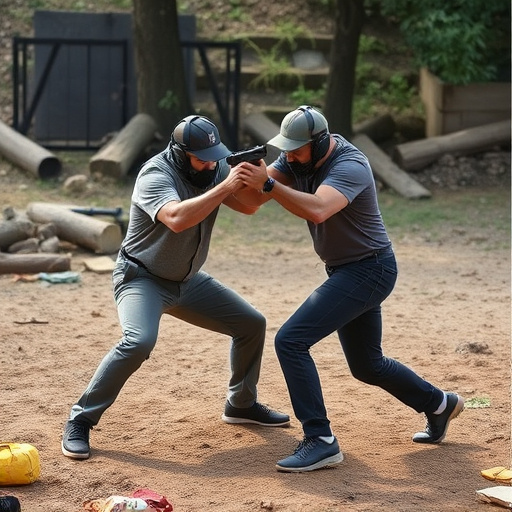
In many regions, the possession and use of self-defense stun guns by college students are subject to strict legal considerations. These laws vary significantly from state to state, with some allowing their carrying for personal protection while others impose stringent restrictions or outright bans. For instance, some campuses require students to enroll in specialized training programs before they can legally wield a stun gun as a means of self-defense. This not only highlights the importance of understanding local legislation but also underscores the need for responsible use and proper handling.
Campus safety protocols play a pivotal role in accidental discharge prevention mechanisms. Universities and colleges often implement stringent policies to ensure the safe storage and handling of self-defense devices on campus. These protocols typically involve secure storage facilities, strict access controls, and regular safety training sessions for students. By adhering to these guidelines, institutions can minimize the risk of accidental discharges, enhancing overall campus safety. Such measures are crucial in fostering an environment where students feel empowered to protect themselves without compromising public safety.
Accidental discharge prevention is paramount in ensuring safe handling of self-defense stun guns, especially among college students. By understanding the causes and risks, adopting design features that incorporate robust safety mechanisms, and providing comprehensive training and education, campuses can effectively mitigate potential hazards. Additionally, legal considerations and well-defined campus safety protocols are essential to foster a secure environment. Self-defense stun guns, when used responsibly, can empower college students to protect themselves, making them valuable tools for personal safety in today’s world.


